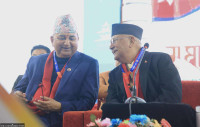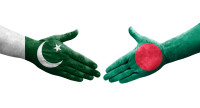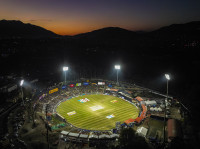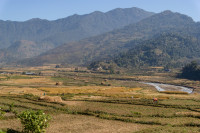Opinion
Look to Africa
Ethiopia’s attempt at building a mega hydropower project by mobilising internal resources holds lessons for Nepal
Shital Babu Regmee
With a nominal per capita of $541, Ethiopia is one of the poorest countries in the world, poorer than Nepal. However, it has resources that can make any country rich. Like Nepal, Ethiopia also has great hydropower potential of more than 60,000MW—the highest in the African continent. Till 2010, Ethiopia had an installed hydropower capacity that was almost the same as Nepal. Recently, it has taken a huge leap forward in the development of its hydropower and aims to produce 8,000MW in five years. And unlike in the past, the target seems attainable. Ethiopia has been achieving 23 percent annual growth in hydropower development in the past few years. So it would be pertinent for Nepal to look into the Ethiopian experience and see if it can replicate this model.
Dam of renaissance
The site for the Renaissance Dam, originally called ‘Project X’, was identified by the United States Bureau of Reclamation during a Blue Nile survey conducted between 1956 and 1964. Many donor agencies, like the World Bank and the African Development Bank, were approached for funding but they refused to finance the project. Ethiopia blames powerful downstream countries for lobbying against the project and blocking financial support from international donors. After failing to attract investment from abroad, the Ethiopian government decided to construct the 6,000 MW project with its internal resources. The late Prime Minister of Ethiopia, Meles Zenawi, in the official commencement of the project said, “All our efforts to lighten this have been unsuccessful, leaving us with only two options. Either to abandon the project or do whatever we must to raise the required funds.” He further added, “No matter how poor we are, in the Ethiopian traditions of resolve, the Ethiopian people will pay any sacrifice. I have no doubt they will, with one voice, say: Build the Dam.”
So the world, particularly donor nations, is curiously watching the progress of the project with disbelief. Some think that the project is a white elephant and will never be complete.
On the other side of the debate, Egypt views the dam as ‘the dam that may damn Egypt’s future’. Some Egyptian leaders have even threatened to sabotage the dam if construction continues unilaterally. So downstream riparian countries, especially Egypt and Sudan, are engaged in a dialogue with Ethiopia about the construction of the dam. Ethiopians, nonetheless, regard the dam as a symbol of national pride and of their country’s renaissance after the severe famines of the 1990s.
A game changer
The Ethiopian government is financing the project by selling bonds and collecting donations from within Ethiopia and abroad. Public contribution is estimated to cover 26 percent of the finance needed for the project. It seems that the project will not be hampered by the unavailability of funds. Bond sales are in progress while the government has already raised more than $350 million, a third of which has been contributed by Ethiopians abroad. So the renaissance dam, by helping mobilise millions of Ethiopians in a euphoric campaign to buy bonds, has, even before completion, initiated millions into a culture of investing. And if successful, it will showcase a new roadmap for financing large scale projects in developing countries.
The contracting modality for the project is also unique. The project was announced on March 30, 2011 and a $4.8 billion contract was awarded to an Italian company, Salini Costruttori, through negotiation the very next day. The Ethiopian government claims the contract avoided cartelling and so, the rates were reasonable. The process would have been impossible had the government taken loans from international donor agencies. According to the project authority, about 36 percent progress has already been made on the project and it will be completed on time. Authorities claim that 700MW of electricity will be generated by 2015 and 6,000MW by 2017.
Lessons for Nepal
Nepal’s situation in hydropower is comparable to that of Ethiopia. Its immense hydropower potential needs to be developed, but both public and private developers are not in a position to develop big hydropower projects at present. Large storage projects are necessary to fulfil domestic needs and export dreams. International financing institutions are reluctant to invest in this sector. Even if funding is assured, the process often takes a long time to materialise.
So the possibility of internal fund mobilisation in Nepal cannot be under estimated. Remittances coming in the country, investment in the share markets, liquidity of banks and investment in unproductive sectors all show the availability of capital in the market. Nepalis living abroad can also contribute to this effort. Moreover, the confidence of individual investors in hydropower sector in Nepal is at its peak at present and they are looking for opportunities to invest. Nepal also could try a mega project similar to the Renaissance Dam project in Ethiopia. As an Ethiopian sociologist put it, “The government mustn’t try to do a thousand things at once, but this one is necessary.” This sentiment is equally applicable to Nepal. If there is national commitment, it is definitely possible to start a mega storage hydropower project in Nepal.
Regmee is a former Energy Secretary with the Government of Nepal and can be reached at [email protected]




 10.12°C Kathmandu
10.12°C Kathmandu










